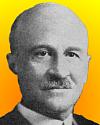
On 27 Jan 1940, David Murray Cowie died, an American pediatrician who promoted the iodization of table salt sold in the U.S. to provide a dietary supplement of iodine, thus reducing the widespread incidence of goitre (major swelling of the thyroid gland in the neck). As a professor of pediatrics at the University of Michigan gathered support from the Michigan State Medical Society and pursuaded several table salt producers to add 0.01% sodium iodide to their product. On 1 May 1924, the first iodized salt was on Michigan grocers' shelves. An article on Goitre Prevention from Minnesota Medicine (1922) (1922) indicates that the medical community regarded this as an important step in public health. And that is why the salt on your supermarket shelf says “Iodized,” even if you had no idea of the reason why, its importance and its history.

On 27 Jan 1861, Ralph Modjeski was born, Polish-American bridge designer and builder who was outstanding for the number, variety, and innovative character of his projects. Today's book pick is: A man who spanned two eras: The story of bridge engineer Ralph Modjeski, by Jozef Glomb, who gives this nearly forgotten engineer some well deserved, posthumous recognition The bulk of Modjeski's projects are permanent fixtures on American interstates and railroads. His design work includes bridges that stretched further and supported more than any preceding structure. The methods he introduced into modern bridge building paved the way for greater and safer bridges around the world. Modjeski also broke world records in cantilever and suspension bridge spans. One example of his work is the 9,570 foot Benjamin Franklin Bridge (1926) which crosses the Delaware River, now over 75 years old and in continuous use.
It is available from Amazon, typically about New from $98.82. Used from $6.00. (As of earlier time of writing - subject to change.)
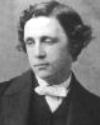 | “Of course they answer to their names?” the Gnat remarked carelessly. “I never knew them to do it,” [said Alice.] “What’s the use of them having names,” said the Gnat, “if they won’t answer to them?” “No use to them,” said Alice; “but it’s useful to the people that name them, I suppose.” |
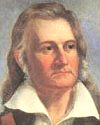 | A true conservationist is a man who knows that the world is not given by his fathers, but borrowed from his children. [Misattributed?] |
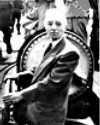 | It troubles me that we are so easily pressured by purveyors of technology into permitting so-called “progress” to alter our lives without attempting to control it—as if technology were an irrepressible force of nature to which we must meekly submit. |
| Before you look at today's web page, see if you can answer some of these questions about the events that happened on this day. Some of the names are very familiar. Others will likely stump you. Tickle your curiosity with these questions, then check your answers on today's web page. | |
| Births | |
 | On 27 Jan 1900, Admiral Hyman G. Rickover was born. He served on active duty with the United States Navy for more than 63 years. Rickover is known as the “Father of the Nuclear Navy” for under his leadership, an atomic-powered submarine was built (1954). What was this first nuclear submarine named? |
 | An Oxford mathematician was born on 27 Jan 1832, who is remembered as a novelist who wrote two popular children's stories under the pen name Lewis Carroll. What is this mathematician's real name? |
| Deaths | |
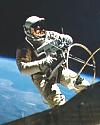 | Edward H. White (1930-1967) was an American astronaut who in 1967 was one of the first casualties of the U.S. space program, killed during a flight simulation. Previously, he had made an orbital flight in Gemini 4, launched on 3 Jun 1965, and made an important “first” in the history of U.S. space flight. What was White's historic “first” as a U.S. astronaut? |
 | John James Audubon (1785-1851) was an artist, and naturalist known for his drawings and paintings. In 1820, he made his goal the publication of an anthology of life drawings. He travelled the Ohio and Mississippi Rivers and the Great Lakes. Audubon is remembered for which type of wild life in his drawings? |
| Events | |
 | On 27 Jan of a certain year, John Logie Baird, a Scottish inventor, gave the first public demonstration of a true television system in London, launching a revolution in communication and entertainment. In which decade did Baird make this demonstration? |
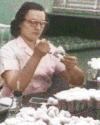 | On 27 Jan 1950, Science magazine announced the new antibiotic terramycin. It was found effective against pneumonia, dysentery, and other infections. Terramycin was developed from 20 million tests for bacteria-fighting organisms found in 135,000 samples collected worldwide. In what material was these bacteria-fighting organisms found? |
Fast answers for the previous newsletter for January 26: symbiosis • from the initial of Keys's name • smallpox • Nature • Wilhelm Eduard Weber • decade including the year 1932 • Isaac Newton.
 If you enjoy this newsletter, the website, or wish to offer encouragement or ideas, please send feedback by using your mail reader Reply button.
If you enjoy this newsletter, the website, or wish to offer encouragement or ideas, please send feedback by using your mail reader Reply button. Your click on a Facebook, StumbleUpon, or other social button on the site webpages is also a welcome sign of appreciation. Thank you for using them.
© This newsletter is copyright 2020 by todayinsci.com. Please respect the Webmaster's wishes and do not put copies online of the Newsletter — or any Today in Science History webpage. (If you already have done so, please remove them. Thank you.) Offline use in education is encouraged such as a printout on a bulletin board, or projected for classroom viewing. Online, descriptive links to our pages are welcomed, as these will provide a reader with the most recent revisions, additions and/or corrections of a webpage. For any other copyright questions, please contact the Webmaster by using your mail reader Reply button.
--
If you do not want to receive any more newsletters, Unsubscribe
To update your preferences and to unsubscribe visit this link
Executive Real Estate Business Class
-
"It was like a man with wings. It wasn't like anything you'd see on TV or in a monster movie." ...
About the publisher
Search This Blog
Blog Archive
-
▼
2021
(585)
-
▼
January
(109)
- Ian Kershaw on why Hitler declared war on America
- On This Day for January 31 - Guy Fawkes executed i...
- Newsletter for Sunday 31 January.
- January 31: Slavery Abolished in the USA, Guy Fawk...
- On This Day for January 30 - “Great Soul” assassin...
- Newsletter for Saturday 30 January.
- January 30: Oliver Cromwell Ritually Executed, Mah...
- On This Day for January 29 - Iraq, Iran, and North...
- Newsletter for Friday 29 January.
- January 29: Romeo and Juliet, Coca-Cola and the Se...
- 'The Food That Built America' Is Back!
- On This Day for January 28 - Explosion of the spac...
- Newsletter for Thursday 28 January.
- Inside The Still-Mysterious Circumstances Of Heath...
- Demystified: What’s the Difference Between a Presi...
- On This Day for January 27 - Vietnam War ended, Wo...
- Newsletter for Wednesday 27 January.
- January 27: Kaiser Bill is Born, the Siege of Leni...
- You are now unsubscribed
- What The Wild West Actually Looked Like in 48 Reve...
- New Savings! $50 off Family Memberships
- On This Day for January 26 - First European settle...
- Newsletter for Tuesday 26 January.
- January 26: Catholic Counter-Reformation, British ...
- On This Day for January 25 - Claudius affirmed as ...
- Newsletter for Monday 25 January.
- January 25: São Paulo Founded, Charles Wilkes Disc...
- Queen Victoria and Prince Albert's marriage | Wors...
- On This Day for January 24 - Opportunity's Mars la...
- Newsletter for Sunday 24 January.
- January 24: Scouting for Boys, Apple's Macintosh a...
- On This Day for January 23 - Madeleine Albright sw...
- See All That's Interesting Most Popular Articles
- Please Confirm Subscription To Our Newsletter
- The "Alaskan Avenger" Who Attacked Sex Offenders W...
- On This Day for January 22 - Roe v. Wade ruling, L...
- Newsletter for Friday 22 January.
- On This Day for January 21 - First commercial Conc...
- Newsletter for Thursday 21 January.
- Need Context with Your News?
- Demystified: Where Do Honeybees Go in the Winter?
- On This Day for January 20 - Barack Obama sworn in...
- Newsletter for Wednesday 20 January.
- On This Day for January 19 - Rule in India transfe...
- Newsletter for Tuesday 19 January.
- On This Day for January 18 - German Empire establi...
- Newsletter for Monday 18 January.
- January 18: King of Siam Kills the Crown Prince of...
- Queen Victoria and Prince Albert: was their union ...
- On This Day for January 17 - Hawaiian monarchy ove...
- Newsletter for Sunday 17 January.
- January 17: US-Modoc War, the UN Security Council ...
- On This Day for January 16 - Beginning of Persian ...
- Newsletter for Saturday 16 January.
- January 16: Ivan the Terrible, Louis XVI's Death S...
- The Tragedy Of David Reimer, The Boy Forced To Liv...
- On This Day for January 15 - British Museum opened...
- Newsletter for Friday 15 January.
- January 15: Henry VIII and the Church of England, ...
- On This Day for January 14 - Premiere of Giacomo P...
- Newsletter for Thursday 14 January.
- January 14: The Dutch Conquer Malacca, the US Revo...
- Demystified: Why Does Water Freeze from the Top Down?
- On This Day for January 13 - Émile Zola's “J'accus...
- Newsletter for Wednesday 13 January.
- January 13: 1st Issue of "The Times" of London, Ch...
- On This Day for January 12 - Haiti severely damage...
- Newsletter for Tuesday 12 January.
- January 12: A Day of Coronation, Gandhi's Last Fas...
- On This Day for January 11 - Amelia Earhart's Hawa...
- Newsletter for Monday 11 January.
- January 11: Spices, Morse Code, Insulin and 55 Yea...
- The real history behind Bridgerton
- On This Day for January 10 - Common Sense publishe...
- Newsletter for Sunday 10 January.
- January 10: Thomas Paine Publishes Common Sense, T...
- On This Day for January 9 - Election of Mahmoud Ab...
- THE IGBO LANDING - HOW THEY COMMITTED SUICIDE
- Newsletter for Saturday 9 January.
- January 9: Joan of Arc's Trial, the Daguerreotype ...
- The Biggest Historical Discoveries From 2020 And M...
- On This Day for January 8 - Anniversary of Grimald...
- Newsletter for Friday 8 January.
- January 8: US National Debt Briefly Hits $0, Forma...
- On This Day for January 7 - Galileo's discovery of...
- Newsletter for Thursday 7 January.
- January 7: A Day of Invention - The Typewriter, Hy...
- On This Day for January 6 - Epiphany, Richard II i...
- Newsletter for Wednesday 6 January.
- January 6: Charles I put on Trial for Treason, FDR...
- Meet The Real-Life Goodfellas Whose True Stories W...
- On This Day for January 5 - Golden Gate Bridge con...
- Newsletter for Tuesday 5 January.
- January 5: Richmond Burns, The Nazi Party Forms, A...
- Last Call for 30% off Memberships
- On This Day for January 4 - Burma granted independ...
- Newsletter for Monday 4 January.
- January 4: The Colt Revolver, a 33 Year Strike and...
- Dangers of Victorian London| Roman history quiz | ...
- On This Day for January 3 - Martin Luther excommun...
-
▼
January
(109)
-
Blogroll
-
About
HistoryFact










0 comments:
Post a Comment